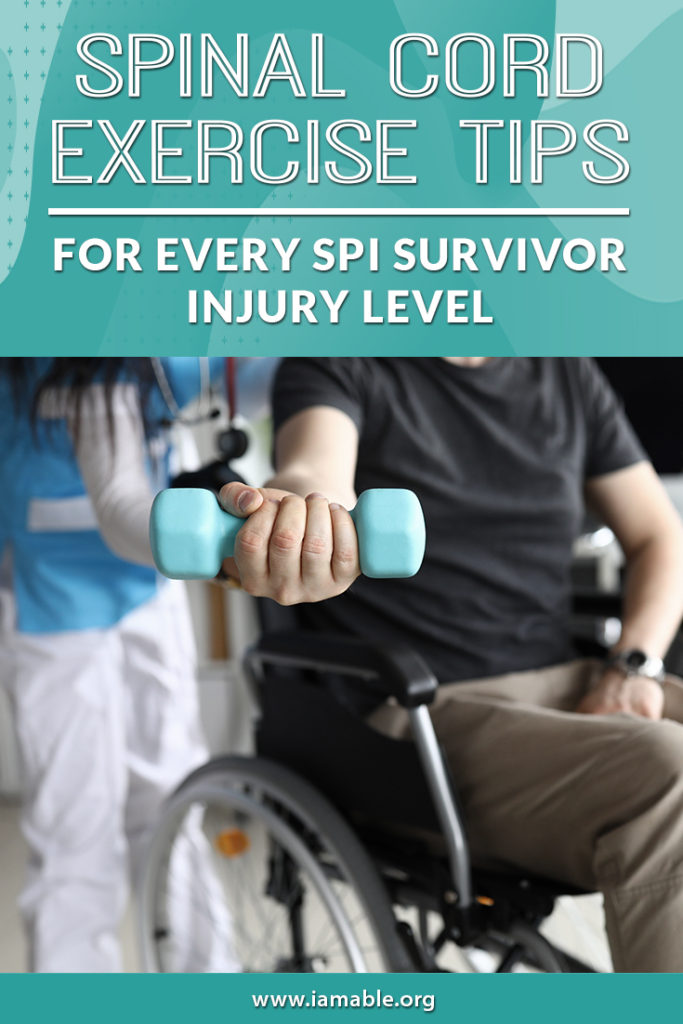Miami, FL 33186

Spinal cord exercise is crucial for SPI survivors. When you exercise, you improve your ability to breathe, you increase your strength and endurance, the body releases feel-good hormones, and so much more! If you want to decrease your risk of things like diabetes and heart disease while boosting your immune system and self-esteem, exercise is right for you.
Unfortunately, you may not be able to exercise in the same ways you did before your injury. Therefore, it is essential to understand what types of training are available based on your ability level. We’re going to take a look at the level of ability that SCI survivors may experience and how you can stay active, regardless of your current circumstances.
You have the most freedom to exercise if you have full or most of the ability in your upper body. What exercises can you perform if you are living with paraplegia? Your primary focus should be on strength training for your upper body, cardiovascular activity, and exercises to increase your range of motion.
A modern advancement that can make it easier to exercise your lower body is Lokomat therapy. This unweighing treadmill supports a patient with a harness and exoskeleton. The machine simulates a natural gait, so you get to exercise for the lower half of your body. At the same time, your muscles grow stronger, your range of motion is enhanced, and the joints loosen up. For some patients, this therapy even helps restore a degree of function as the nervous system remembers the movements and rewires.
Using fitness equipment is often possible, even though an injury this high up on the spine may limit some of your arm and hand movement. Modified gloves can allow you to hold and use certain types of exercise equipment safely. As a result, you may be able to get some activity for your shoulders, biceps, and triceps.
There are some weight machines that you can use at home in this manner. However, a fitness center is more likely to provide you access to a broader array of exercises that you can perform. See if the gym will let you try some of the machines before you sign up so that you know how much you will be able to get from your membership.
One method for exercising the muscles that should be available at an activity-based therapy center is FES (functional electrical stimulation). FES provides an electrical current to stimulate muscles that are not receiving signals from the brain. This allows these muscles to get some exercise, and it can reduce spasticity. Sometimes, therapy centers use FES in conjunction with a stationary cycle. The device stimulates the muscles to allow a person to pedal, even without the use of the leg muscles. It is a great way to get some additional cardiovascular exercise and to strengthen the muscles of the legs.
Again, things grow more complicated as we climb the spine. In the C4-C5 area, you may have reduced function in your hands and arms. At this level, breathing exercises become more essential to help the respiratory system function optimally. You may also be able to perform limited shoulder and neck exercises.
Elastic bands are a fantastic workout tool to help you get some training for your biceps. Again, the technology that is available at activity-based fitness centers, such as Lokomat therapy or functional electrical stimulation, can provide you the opportunity to get the spinal cord exercise you need, regardless of your ability level.
When an injury occurs at the top of the spine, a patient may experience little or no mobility. Breathing exercises are among the most vital things you can do. If you find that you have any movement in the neck or shoulder, activities like shrugs may be possible.
In this case, modern advancements are crucial. For example, an FES bike may also have a handcycle. In this case, the electrical stimulation can help you to cycle not only with your legs but also with your arms. This can allow for full-body exercise, assisting the heart, lungs, and muscles. Therefore, choosing the right recovery center in the wake of this type of SCI is even more vital.
Exercising the right way will play a crucial role in the recovery process following an SCI. It will also allow you to optimize your outcome and improve your overall health. Therefore, you want to be sure to stay active, regardless of the extent of your injuries. Working together with an activity-based therapy center can help you to reach this goal. A physical therapist can help you develop an exercise routine to perform at home and provide you with some unique exercise options at the facility.
To help you stay motivated, iAM ABLE offers an eBook entitled 7 Unbelievably Important Steps to Take to Thrive After Paralysis. This publication can help you to come to terms with the new and challenging circumstances that you must face. Taking control of your new reality is a significant step in reaching your maximum independence and improving the quality of your life. You don’t have to be okay with your new reality, but you do need to control it so that you can keep enjoying life and thriving.
Grab our free e-book 7 Unbelievably Important Steps to Take to THRIVE after Paralysis by clicking the image below.
